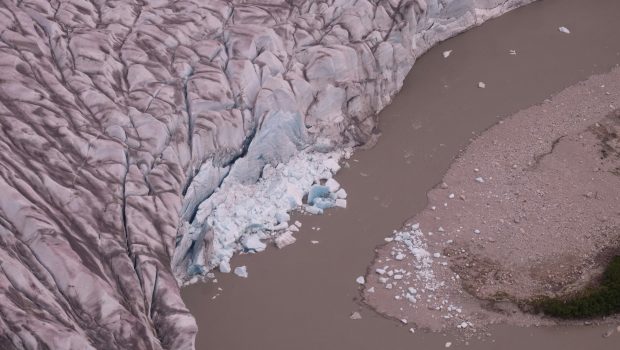
A range of potential climate change disasters worry scientists, but some scenarios are so dire that experts are constantly monitoring how close we are to disaster.
This week brought some good climate news for one of those scenarios in Antarctica: The so-called “doomsday glacier” may be more stable than previously thought, according to new research published Wednesday.
Thwaites Glacier in the vast West Antarctic Ice Sheet has been called the “doomsday glacier” because of its potential to dramatically raise sea levels, flood low-lying coastal communities and displace millions of people.
Meanwhile, scientists continue to monitor several other potential large-scale climate disruptions.
Scenarios involving the Atlantic Meridional Circulation (AMOC) and the Greenland ice sheet have the potential to radically reshape life on Earth in the coming years, decades, or centuries.
The worst-case scenario is unlikely at the moment.
Thwaites Glacier has been studied for years as an indicator of human-caused climate change.
In the nightmare scenario, melting glaciers would cause sea levels to rise by 50 feet. The Florida peninsula would be submerged, except for a strip of high inland land stretching from Gainesville to north of Lake Okeechobee, with the state’s coastal cities submerged.
That scenario now seems unlikely, the new study says.
“We know that this extreme prediction is unlikely during the 21st century,” said study lead author Matthew Morlingham, a professor of earth sciences at Dartmouth College, in a statement.
“Unfortunately, Thwaites Glacier will retreat along with most of the ice in West Antarctica, but not as quickly as one scenario suggests,” Morlighem said. USA Today.
He told USA TODAY that sea levels are likely to rise by about 2-3 feet by the end of the century and continue to rise beyond that as ice sheets continue to melt.
Greenland Ice Sheet
There is conflicting news about a similarly worrying ice sheet in Greenland.
In total, the ice sheet covers more than 656,000 square miles, and if it melted completely, global sea levels would rise about 20 feet.
Greenland is losing about 270 billion tons of ice a year, NASA said, causing sea levels to rise. A study earlier this year found that Greenland’s ice sheet is melting faster than researchers thought.
But a study last year found that the ice sheet may be more resilient to climate change than previously thought.
Essentially, the study found that “worst-case scenarios of ice sheet collapse and subsequent sea-level rise could be avoided—and even partially reversed—if we could lower projected global temperatures after 2100,” said study co-author Bryn Hubbard, a glaciologist at Aberystwyth University in Wales.
Amok collapse
The Atlantic Meridional Circulation (AMOC)—a massive system of ocean currents that transports warm water from the tropics to the North Atlantic—could collapse by mid-century, or perhaps any time from 2025 onward.
A true collapse of the AMOC could lead to rapid changes in weather and climate in the United States, Europe, and elsewhere. If it happens, it could lead to an ice age in Europe, sea level rise in cities like Boston and New York, and more powerful storms and hurricanes along the East Coast.
Another study suggests the collapse could happen by 2050, but the research is still in its early stages. Earlier this year, a study published found that the collapse is coming at some point, but gave no indication of when it might happen.

“Total alcohol fanatic. Coffee junkie. Amateur twitter evangelist. Wannabe zombie enthusiast.”





More Stories
Is this what the PS5 Pro will look like? (Image)
Finally, Windows 11 24H2 update significantly boosts AMD Ryzen – Windows 11 performance
Heart Surgeon Reveals The 4 Things He ‘Totally Avoids’ In His Life